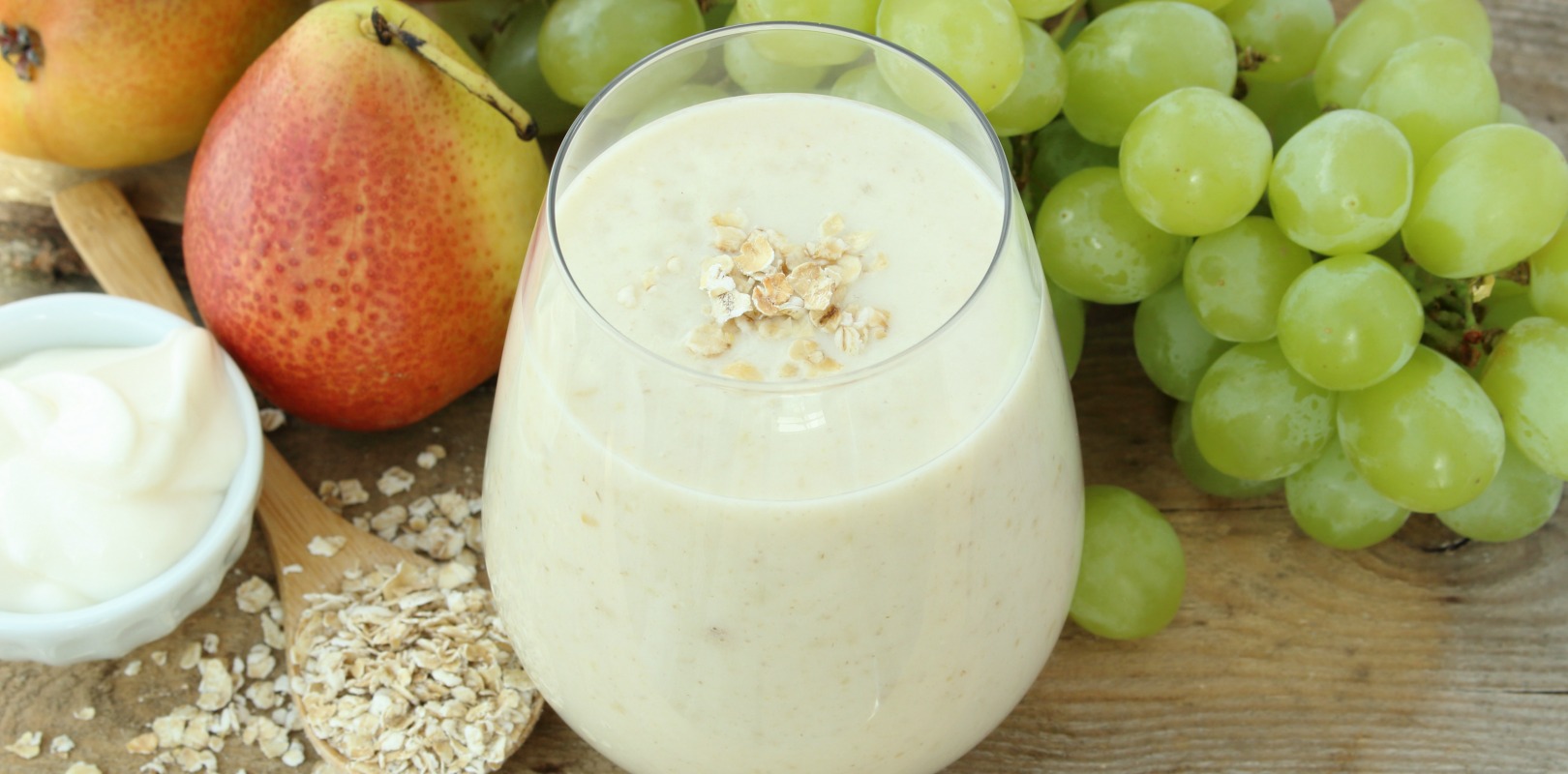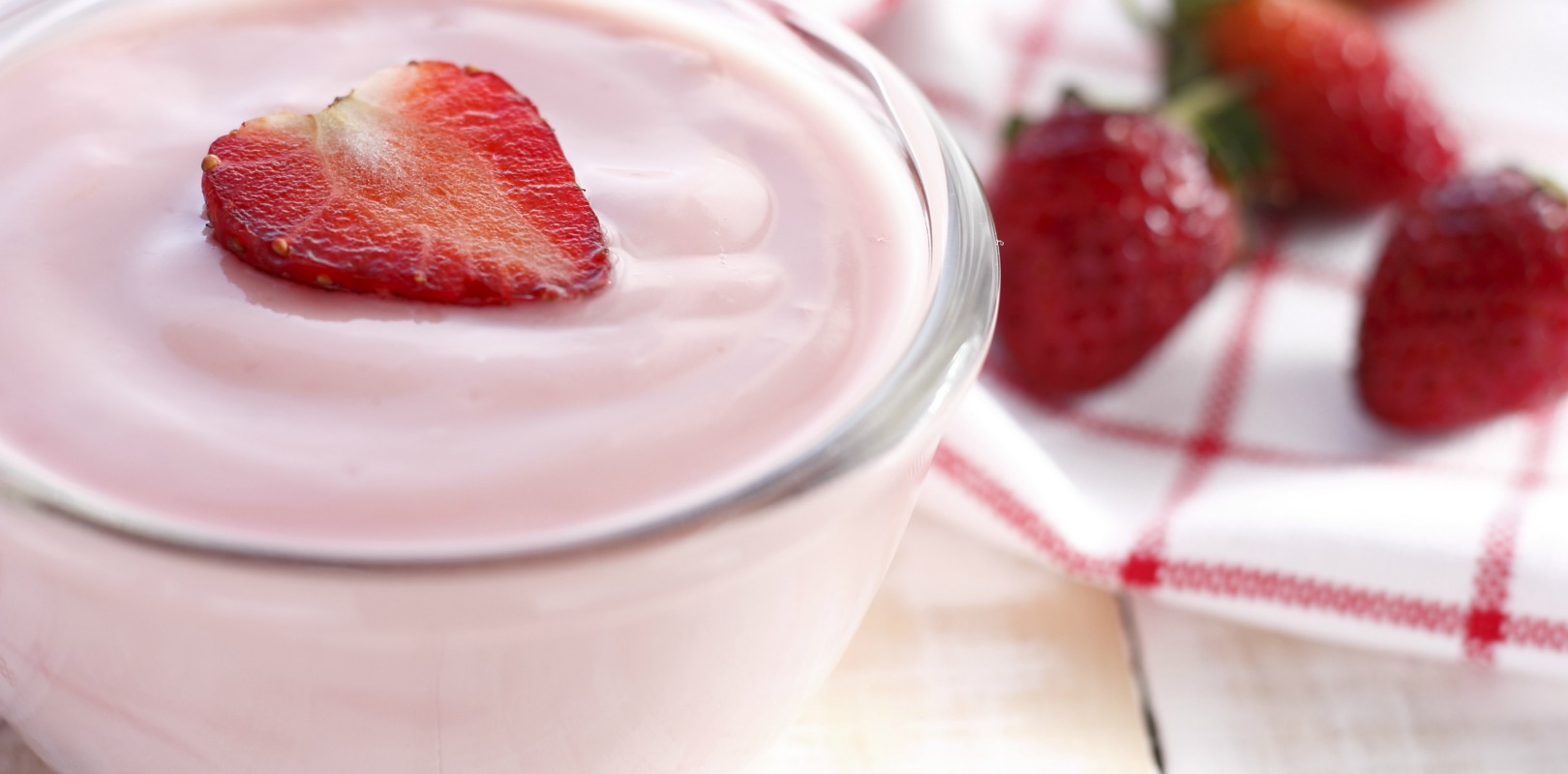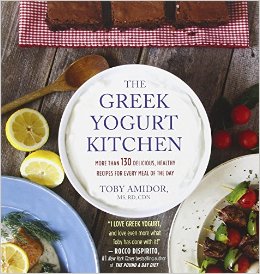Selected for you this week: Tips to heal your gut naturally with yogurt, by Dietitian Cassie. Every week, we bring you valuable quotes from around the web on yogurt.
Selected for you:”Restore healthy gut bacteria with yogurt”


Selected for you this week: Tips to heal your gut naturally with yogurt, by Dietitian Cassie. Every week, we bring you valuable quotes from around the web on yogurt.

For serving
• ¾ to 1 ½ cups labneh, homemade or store-bought
• Warm, toasted pita wedges
For the roasted tomatoes
• 2 cups cherry tomatoes, halved
• 1 tablespoon extra-virgin olive oil
• Kosher salt and freshly ground pepper
For the pistachio pesto
• 1 garlic clove, smashed
• ¼ cup unsalted pistachios
• ½ cup (packed) fresh basil leaves, coarsely chopped
• ¼ teaspoon kosher salt
• 3 tablespoons extra-virgin olive oil
For the tapenade
• 1 cup pitted kalamata olives, rinsed
• 1 tablespoon drained capers
• ¼ teaspoon anchovy paste (optional)
• Extra-virgin olive oil, for drizzling (optional)
• Squeeze of fresh lemon juice
Roast the tomatoes
Preheat the oven to 325°F. Line a baking sheet with parchment. Lay the tomatoes cut side up on the sheet and drizzle with the oil. Sprinkle lightly with salt and pepper. Roast until collapsed, 30 to 40 minutes. Cool. (Makes 1 generous cup.)
Make the pesto
In a mini food processor, pulse the garlic, pistachios, basil, and salt until finely chopped. Add the oil a bit at a time, processing in bursts, until the pesto is emulsified. (Makes⅓ cup. A little goes a long way.)
Make the tapenade
In a mini food processor, pulse the olives, capers, and anchovy paste, if using, until paste-like. Drizzle in a touch of oil, only if desired. Season with lemon juice to taste. (Makes ¾ cup.)
Serve
Spread the labneh in a shallow serving bowl, using the back of a spoon to make a wide indentation in the center. Dollop with distinct, heaping scoops of the roasted tomatoes, pesto, and tapenade. Serve with warm pita wedges.

 As part of the scientific sessions, organized at the annual Experimental Biology meetings (2-6 April, 2016) in San Diego, US, the Yogurt in Nutrition Initiative for a Balanced Diet gathered highly respected experts in this area, according to the following scientific program: ‘Yogurt & (Type 2) Diabetes, translating science into practices‘.
As part of the scientific sessions, organized at the annual Experimental Biology meetings (2-6 April, 2016) in San Diego, US, the Yogurt in Nutrition Initiative for a Balanced Diet gathered highly respected experts in this area, according to the following scientific program: ‘Yogurt & (Type 2) Diabetes, translating science into practices‘.
Speakers presentations provided a complete overview of the T2 Diabetes issue and have framed the beneficial role of yogurt consumption, as a part of a healthy diet and lifestyle, in the reduction of the incidence of the disease. Moreover, new data coming from an economic model, applied on UK population, unveiled that reducing the risk of developing T2 Diabetes through increased yogurt consumption, would relieve pressure on the health care infrastructures and improve quality of life of the population. T2 Diabetes is a chronic metabolic disease, whose prevalence is growing worldwide. By 2035, it is expected that the number of people with prediabetes will rise up to 471 million, or 8% of the adult population worldwide. The high cost for society is also escalating. However, scientific data show that it is possible to prevent or delay the disease by maintaining a healthy weight, having healthy food habits and being active. The invited experts reviewed and discussed the specific effects of yogurt in relation to this issue.
Taking into account the controversy on dairy products and T2 Diabetes prevention, Professor Jordi Salas-Salvadό – well known for his expertise in obesity and metabolic diseases – reviewed the epidemiological studies, evaluating the association between yogurt consumption, and risk of development of T2 diabetes. Even if clinical trials are warranted to confirm the beneficial effects on insulin sensitivity, there was clear evidence from observational studies that yogurt consumption was associated with a lower T2 Diabetes risk. This potentially protective role was observed in healthy subjects, as well as in older adults at high cardiovascular risk, independently of the yogurt fat content.
Several mechanisms have been proposed to explain the association between yogurt consumption and reduced risk for developing T2 Diabetes. The effect of yogurt on postprandial glucose and insulin responses is one of them. This was the object of the talk by Professor Thomas Wolever. There is excellent evidence that diets with low glycemic index (GI) or low glycemic load (GL) reduce the risk for developing T2 Diabetes. Yogurt (plain and sweetened) has an overall low GI, due to its lactose and protein content. Relative to other carbohydrate foods, dairy foods, like yogurt, cause surprisingly a disproportionately high insulin response. A high insulin response is considered to be deleterious, because hypersinsulinemia is associated with insulin resistance and increased risk for T2 Diabetes. However, yogurt, whether consumed alone or as a part of mixed meals, likely elicits similar or a lower insulin response, compared to other meals or snacks. Therefore, choosing yogurt instead of other protein and carbohydrate sources, as part of a healthy dietary pattern, may assist in reducing the diet GI and then the risk for T2 diabetes.
A more recent proposed mechanism is the interaction with gut microbiota: while obesity is one of the main T2 Diabetes risk factors, the gut microbiota has been shown to influence the development of obesity. Therefore, understanding microbial interactions with the host may provide potential options for therapy. Dr Li Wen gave an overview of the research progress in relation to the diet induced alteration of gut microbiota and its effects on metabolism. She also presented the results of specific studies on gut microbiota and immune populations, carried out in obese patients with or without T2 Diabetes and undergoing bypass surgery.
Without intervention, 15% to 30% of people with prediabetes (that’s 1 out of 3 adults! in the US) will develop type 2 diabetes within 5 years. Constance Brown-Riggs, a registered dietitian and certified diabetes educator, discussed the outcomes of prevention programs and importance of healthy diet, including yogurt. Several randomized clinical trials have shown that individuals at high risk for developing diabetes can be given interventions that significantly decrease the rate of onset of diabetes. The two largest diabetes prevention studies, the United States Diabetes Prevention Program (DPP) and the Finnish Diabetes Prevention Study (DPS) have both shown beneficial effects of lifestyle interventions. Their results indicate that high-risk people can delay or avoid developing T2 Diabetes by losing weight through regular physical activity and a diet low in fat and calories. Evidence also suggests that healthful diet patterns including yogurt, like DASH and Mediterranean diets, may be associated with a reduced risk of T2 Diabetes.
Dr Angelo Tremblay pointed out that some foods might influence the overall quality of the diet, due to their intrinsic composition, but also to their potential to modify the rest of food consumption, presumably via effects on appetite control. Yogurt seems to be part of these specific foods. Yogurt consumers have a greater intake in key nutrients, such as minerals (calcium, potassium, magnesium, zinc), vitamins (vitamin B2, B12, D) and protein, compared to non-consumers. Among both children and adults, frequent yogurt consumers have significantly better diet quality than infrequent consumers do. In addition, yogurt consumers tend to eat less fast food, french fries and fried foods, processed and red meats, pizza, snacks, regular soft drinks or alcohol. Besides, yogurt consumers seem to exhibit some behaviors, such as reduced smoking and a more active lifestyle. All this research suggests that yogurt consumption might represent a global signature of a healthy diet and lifestyle.
Professor Andrew M. Prentice presented the potential economic impact of yogurt consumption in relation to a decrease in T2 Diabetes risk. Costs for T2 Diabetes management were taken into consideration, as well as hospital and outpatient costs for treating T2 Diabetes-related complications. Using highly conservative assumptions, the expert concluded on substantial savings to the UK National Health Service: approximately £2.3 billion over 25 years. Moreover, a significant gain in quality of life might be achieved. The professor reached the conclusion that the promotion of yogurt consumption could, in the long term, contribute to a reduction in the prevalence of T2D, the associated burden of disease and related health costs.
The 4th Yogurt Summit finally discussed how to take advantage of yogurt in practical terms. A special session was organized by two registered dietitians – Azmina Govindji and Megrette Fletcher. Azmina Govindji presented different simulations of yogurt swapping and how this may help to save calories and to incease nutrient density. Eating yogurt instead of other snacks, could also help increasing the volume/weight of food consumed without increasing calories. According to US Dietary Guidelines 2015-2020, choosing lower fat versions of milk, yogurt, and cheese should be recommended. Megrette Fletcher introduced the ‘Mindful Eating Cycle’, which reminds us of the importance of using our senses and listening to our body to make the right food choices, at the right time, in the right circumstances, and in the right quantity.
The event ended with a unique tasting session, where two special guests – Hubert Cormier (registered dietitian) and Cheryl Sternman Rule (food writer and blogger) – treated the assembly with several tasty yogurt-based recipes, such as: “Labneh with Tomatoes, Pesto, and Tapenade”, “Coriander-Lime Chicken”, “Lentil patties served on hamburger buns” and “Goat’s cheese, grape and pecan balls”. We were also delighted to enjoy a yogurt bar with plenty of sweetened and savory toppings to create a custom recipe and share it on Twitter. A “conviction wall” was also deployed out of the room to invite everyone to share a conviction message after the summit.
Find here the abstract book.


Diets high in meat, sugar and saturated fats, may increase the risk of metabolic diseases and also the societal and ecological burden. This study is an example of a Danish case that analyzed, if a healthy and regional diet can be an alternative strategy to improve public health.
Local and organic food
A New Nordic Diet (NND) was developed, based on consuming local products from a Nordic origin and organic status. The NND includes low meat consumption and a high intake of legumes, fruit, vegetables, whole grains, seafood, potatoes, nuts and herbs, compared to the Average Danish Diet (ADD).
To measure the cost-effectiveness of the full-scale implementation of the NND, the authors took into account the environmental impact, the health risk effects and the monetary value of this dietary shift.
Decreased environmental impact
The Environmental impacts of the ADD and the NND were evaluated for 15 impact categories, including human toxicity, ozone layer depletion, global warming and respiratory organics and inorganics. The results showed that the NND has more favorable environmental outcomes than the ADD: 17% lower for nature occupation, 16% for global warming, and 12% for respiratory inorganics. The monetary value of the environmental improvements was estimated to be €0.5–0.9 billion.
Health effects of this dietary shift
The scientists focused on the impacts of 10 dietary factors on the risks of up to 6 diet-related diseases: cardiovascular, stroke, diabetes, stomach, lung and breast cancer. The impact of this dietary shift was calculated in Disability-Adjusted Life Year (DALY). One DALY can be thought of as one lost year of “healthy” life.
The results showed that the dietary change save about 6500 DALY/year from cardiovascular disease, with main contributions from increased consumption of fruit and vegetables, reduced consumption of meat and reduced consumption of sugared drinks. About 3000 and 1200 DALY/year are calculated to be saved from colorectal cancer and lung cancer, respectively. In total, an estimated 18000 DALY will be saved per year in Denmark from these six chronic diseases, with a cost-effect ratio of €73,000–94,000 per DALY.
Hence, implementation of the New Nordic Diet could be an economically relevant strategy for promotion of public health.


 Andrew Prentice is a PhD and Director at the MRC International Nutrition Group, London School of Hygiene & Tropical Medicine in the UK. He also directs the group’s permanent field laboratory, MRC Keneba, in rural Gambia. The group is also active in Kenya, Tanzania and Bangladesh.
Andrew Prentice is a PhD and Director at the MRC International Nutrition Group, London School of Hygiene & Tropical Medicine in the UK. He also directs the group’s permanent field laboratory, MRC Keneba, in rural Gambia. The group is also active in Kenya, Tanzania and Bangladesh.
Born and bred in Uganda, he received a BSc in Biochemistry from the University of Leeds, and obtained his PhD in nutrition at the University of Cambridge. Following 5 years of post-doctoral work in Keneba, he returned to the UK to lead the Energy regulation and obesity Group at the MRC Dunn Clinical nutrition Centre, Addenbrooke’s Hospital. During this period he was involved in the development and exploitation of numerous novel technologies, including stable isotope methods for assessing breastmilk intake and free-living energy expenditure (2H218o), and whole-body calorimetry.
In 1999, he left Cambridge to establish his current research team at London School of Hygiene & Tropical Medicine and refocuses his attention exclusively on studying diet-disease relationships in low-income countries. The work of his research team is focused in 4 areas: nutritional modulation of immunity and infectious diseases; combating micronutrient deficiencies in poor populations; calcium, vitamin D and bone health; and nutritional genetics. The emphasis is on discovery science in response to a conviction that the development of more effective public health interventions is still greatly hampered by critical knowledge gaps.
Andrew has been a member of numerous national and international advisory committees on nutrition and is a former vice-President of EASO (The European Association for the Study of Obesity) and past Chair of the International Nutrition Council of the American Society for Nutrition (ASN). His work has been recognized by a number of awards, most recently the EV McCollum International Award 2010/11 from ASN. He has published over 300 peer-reviewed papers.
Read more about his research here.

In a small bowl, combine yogurt and cream cheese. Stir in the cucumber, onion, dill, lemon juice, peel, garlic, salt and pepper. If you desire a thinner consistency dip, add more yogurt, ¼ cup at a time, stirring and tasting as you go. Transfer contents to a bowl and serve with fresh, raw vegetables or pita chips.

To help educate the public, the most important message for me is that healthy food can absolutely be tasty and not difficult to make. Giving the public simple tips on food and cooking can help them overcome the barriers to cooking healthy food at home.
Yogurt has always been a part of my healthy eating plan since I was a little girl. As I grew older, I realized that yogurt is more than just a breakfast or snack food. In my cookbook The Greek Yogurt Kitchen I highlight the versatility of Greek yogurt through over 125 healthy, delicious recipes.
I always want to keep abreast of recent scientific research in the world of yogurt. Yogurt is one of the most popular and nutritious foods and I was to keep abreast of the research and how food scientists are creating new and exciting ways for consumers to enjoy it. You can find Toby’s book online

The Yogurt in Nutrition Initiative will be live covering the Yogurt Summit from San Diego on April 6th, from 8am til 2pm (UTC-7). To best capture the moment and bring the best of our symposium’s content, Lori Shemek, Hubert Cormier and Toby Amidor will be tweeting the event. Take part to the discussion on the event’s official hashtad #yogurt2016: share your thoughts and comments, ask questions to our speakers and interact with our guest experts. Join us, the event is yours!

Selected for you this week: a great article from Dr Eric Braverman on HuffingtonPost about yogurt and weight management. Every week, we bring you valuable quotes from around the web on yogurt.
One of the key lessons to achieving lasting weight loss is actually learning to eat more, instead of eating less. Many of my patients think that in order to lose weight they need to starve themselves. This is completely wrong! In fact, lowering your caloric intake may lead to weight loss in the first few weeks, only to find that you plateau early in the process. You might have experienced this phenomenon as January has come and gone: your first few weeks of dieting went great, but afterwards your weight loss has lessened to a trickle. In order to rev up your weight loss again, you might have to eat more.
It’s not only the quantity of your food that you need to monitor, but also the quality. The diet I’ve put together in my new book,THE YOUNGER (THINNER) YOU DIET concentrates on foods that are low in calories but are also nutrient-dense, so that you get the most out of every meal. One of the most important food groups that I focus on are foods high in calcium.
Researchers at the University of Knoxville have found that dietary calcium directly influence your weight loss efforts. High calcium foods, notably dairy sources, have been shown to increase body fat breakdown and preserve metabolism during dieting. High levels of calcium will also help your body get younger by building strong bones. This study suggests eating three servings of dairy products a day to get the most benefit.
Increasing your calcium intake can also directly reduce belly fat. A study presented at the Obesity Society Meeting of 2007 showed significant abdominal fat reduction following calcium supplementation. During the course of the seven week study, participants ate 3-4 servings of dairy foods each day. The data showed that an exercise program combined with a reduced calorie diet, and an increase in dairy consumption changed metabolism significantly enough to effect the amount of body fat burned.
You also want to focus on foods that are high in protein. Your body needs lot of protein so you will feel full and satisfied all day long, so you won’t binge on the easy-to-eat carbs you may crave. Protein also gives you the energy you need to keep up with an exercise program that will burn lots of calories.
Eating calcium and protein-rich foods together seems to be the best cocktail for weight loss. When combined, these two nutrient groups have been clinically proven to raise metabolic rate and improve digestion and bowel health.
One food group that is high in both these nutrient groups is dairy. However, dairy foods that contain lots of calcium, and lots of protein, are usually high in fat as well as calories, making them a bad choice for dieters. I’ve also found a correlation between eating large amounts of cheese and other high-fat foods to increased cellulite production. Because of these reasons, I find most people who are overweight cannot afford to increase their dairy consumption at all.
But yogurt is the exception to the rule. Yogurt is a low-fat food packed with calcium as well as protein. It provides all the benefits of dairy without the added fat or calories, and actually contains more calcium and protein per serving than other dairy product because of the way it is made.
Yogurt specifically has been studied as a calcium-rich food that helps burn fat and promotes weight loss. A University of Tennessee study in 2005 shows that dieters who ate three servings of yogurt a day lost 22% more weight and 61% more body fat than those who simply cut calories and didn’t add calcium to their eating plan. Those that lost the most weight were also able to protect their lean muscle mass, which is critical when dieting, because the muscle mass is essential for maintaining high metabolism.
Eating yogurt every day can also support your immune system, reducing overall inflammation. It is also know to lower LDL “bad” cholesterol. Lastly, many adults have problems digesting milk products because their bodies do not produce enough of the enzyme lactase. Yogurt naturally contains lactase, making it a healthy alternative for those who can’t tolerate other milk products. For all these reasons, I suggest that you make yogurt a part of your new diet every single day.

